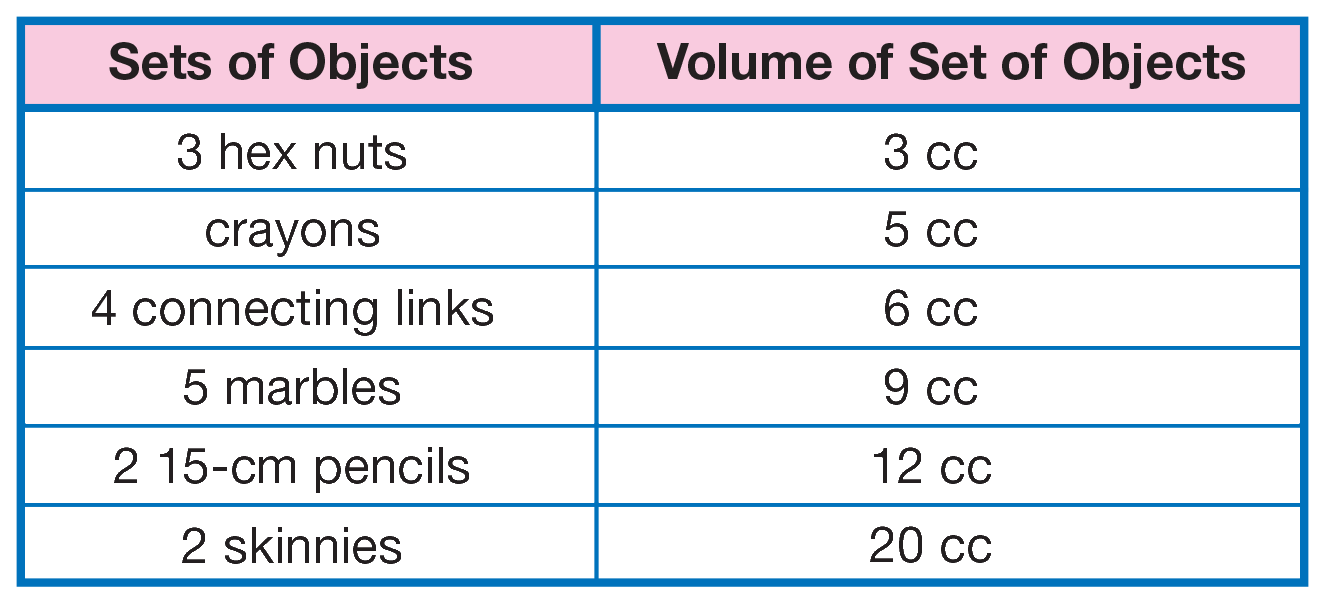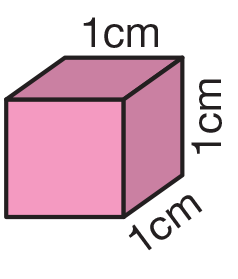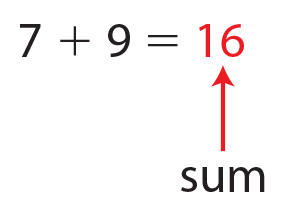|
|
Daily Practice and Problems |
Lesson |
Homework |
Assessment |
Student Books |
Student Activity Book |
|
|
|
|
Teacher Resources |
Teacher Guide - digital |
|
|
|
|
Supplies for Student Pairs
container filled with water (at least 80 cc)
eyedropper
100-cc graduated cylinder
paper towels
small cup
train of centimeter connecting cubes. See Materials Preparation.
4 or more sets of small objects. See Materials Preparation.
small container or bag
crayons, optional
Materials for the Teacher
Display of Volume Math Master (Teacher Guide)
Display of Measuring Volume data table (Student Activity Book) Page 568
Display of Triple the Volume of Objects data table (Student Activity Book) Page 572
Display of Bar Graph Master (Teacher Guide) Page 105
Unit 11 Assessment Record
Math Facts Class Record
Mr Archimedes' Bath by Pamela Allen
container filled with water
eyedropper
2 graduated cylinders. See Materials Preparation.
small object. See Materials Preparation.
small cup
Reading a Graduated Cylinder Tips chart from Lesson 2
Materials Preparation
Prepare Graduated Cylinder. Fill one graduated cylinder with 80 cc of water to demonstrate water displacement.
Keep the other cylinder empty to review correct procedure in filling a cylinder accurately.
Prepare Trains of Centimeter Connecting Cubes. Prepare trains of centimeter connecting cubes with
volumes ranging between 8 cc and 18 cc for each student pair. For trains that exceed 10 cc, arrange the
cubes in two rows so that they will fit inside the graduated cylinders.
Gather Sets of Small Objects. Gather sets of small objects with volumes ranging between 3 cc and
20 cc for each student pair in a small container or bag. Each pair will need four sets of objects. Choosing
objects with a wider range of volumes makes the problems more interesting. See Figure 1 for suggested
items. Test your sets of objects to be sure they are within the range and provide a variety of volumes.

Figure 1: Sets of objects with varying volumes
Meeting Individual Needs
Vary the number of select items, e.g., connecting links or marbles, to provide a challenge to student pairs who are ready.
Gather Materials for Targeted Practice in a Learning Center. Gather small objects such as coins,
marbles, nuts and bolts, copies of the Measuring Volume Practice Assessment Master, a graduated cylinder
of water, another container of water, an empty container, and some paper towels in a learning center.
Ask students to measure the volume of each object and record their findings in the data table.
Meeting Individual Needs
Have students use the same starting level of water in the graduated cylinder for each object, or, to provide more challenge, you may
have individual students vary the starting level of water for each object.
Prepare Containers of Water. Student pairs will need access to at least 90 cc of water. Gather and fill
an appropriate pitcher for each student pair or place a larger container at a central location with a cup
for each student pair.
TIMS Tip
Students may find a small cup easier to manage and control while pouring and filling the graduated cylinders.


















